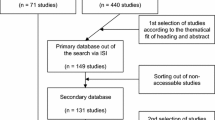Abstract
Drawing on case study insights from a home gardening program in the Eastern Cape Province, South Africa, this study explores the relationship between culture and food security in a local context. Informed by an ideational and a process-oriented understanding of cultural analysis, our inductive approach to field research reveals several elements of culture that have direct impacts on local food production: power, gender, identity and cultural change. The study offers insights into the multi-level dimensions of power as it relates to individuals, households, and broader community dynamics that are central to understanding the local dynamics of food security. Also, the local gardening program played a critical role in maintaining a “culture of farming” at the village level while also navigating important changes to local culture, such as the career preferences of local youth. Research implications include an understanding of the adaptive role that local institutions can play in the food security challenges within South Africa.




Similar content being viewed by others
References
Abrahams, N. (1996). Negotiating power, identity, family, and community:women’s community participation. Gender and Society, 10(6), 768–96.
Adeniji, B., & Maiangwa, M. G. (2009). Women farmers and the need for a gender sensitive extension. Journal of Agriculture, Forestry and the Social Sciences, 7(1), 11–21.
Ajani, O. I. Y. (2008). Gender Dimensions of Agriculture, Poverty, Nutrition and Food Security in Nigeria (Nigeria Strategy Support Program Background Paper 5). Washington, DC: International Food Policy Research Institute.
Allen, P. (2010). Realizing justice in local food systems. Cambridge Journal of Regions, Economy and Society, 3, 295–308.
Andrew, M. (1992). A geographical study of agricultural change since the 1930s in Shixini Location, Gatyana District. Rhodes University, Grahamstown, South Africa: Transkei. Unpublished MA thesis.
Baker, L. E. (2004). Tending cultural landscapes and food citizenship in toronto’s community gardens. Geographical Review, 94(3), 305–25.
Bonnekessen, B. (2010). Food is good to teach: An exploration of the cultural meanings of food. Food, Culture and Society: An International Journal of Multidisciplinary Research, 13(2), 279–295.
Chant, S. (2006). Female Household Headship, Privation, and Power: Challenging the ‘Feminization of Poverty’ Thesis. Pp. 125–164 in Out of the Shadows: Political Action and the Informal Economy in Latin America, edited by Patricia Fernandez-Kelly and Jon Shefner. University Park, PA: Pennsylvania State University Press.
Crane, D. (Ed.). (1994). The Sociology of Culture: Emerging TheoreticalPerspectives. Cambridge, Massachusetts: Blackwell Publishers.
De Klerk, H. V. (2013). 'Still feeding ourselves'. In: Hebinck, P. and B.Cousins (Eds.) In the shadow of policy: Everyday practices in South African land and agrarian reform. Johannesburg: Wits University Press.
Fay, D. (2013). Cultivators in action, Siyazondla inaction? Trends and potentials in homestead cultivation. In P. Hebinck & B. Cousins (Eds.), In the shadow of policy: everyday practices in South African land and agrarian reform. Johannesburg: Wits University Press.
Fetterman, D. M. (1998). Ethnography. Step by step (2nd ed.). Thousand Oaks: Sage.
Gawaya, R. (2008). Investing in women farmers to eliminate food insecurity in southern Africa: policy-related research from Mozambique. Gender & Development, 16(1), 147–159.
Galiè, A., Jiggins, J., & Struik, P. C. (2012). Women's identity as farmers: A case study from ten households in Syria. NJAS-Wageningen Journal of Life Sciences, 64, 25–33.
Hall, S. (1996). Cultural Identity and Cinematic Representation. Pp. 210–22 in Black British Cultural Studies: A Reader, edited by Baker, H. A., Oiawara, M., & Lindeborg, R.H.. Chicago: University of Chicago Press.
The World Bank, Food and Agriculture Organization, and International Fund for Agricultural Development. (2009). Gender in Agriculture Sourcebook. Washington, DC: The World Bank.
Janzen, J. M. (1995). Self-Presentation and Common Cultural Structures inNgoma Rituals of Southern Africa. Journal of Religion in Africa, XXV (2), 141–62.
Jolly, R. (2006). Co-Engaged Learning: AmaXhosa Women’s Narratives on Traditional Foods. A half-thesis submitted in partial fulfillment of therequirements for the Degree of Master of Education. Pp. 1–100. Rhodes University
Lappe, F. M. (1973). The world food problem. The Hastings Center Report, 3(5), 11–13.
Lewis, J. (1984). The rise and fall of the South African peasantry: a critique and reassessment. Journal of Southern Africa Studies, 11(1), 1–24.
Lukes, S. (2005). Power: A Radical View (2nd ed.). New York: PalgraveMacmillan.
Marshall, C., & Rossman, G. (2011). Designing Qualitative Research (5th ed.). Thousand Oaks, CA: SAGE Publications, Inc.
Molnar, J. (1999). Sound policies for food security: The role of culture and social organization. Review of Agricultural Economics, 21(2), 489–498.
Mooney, P. H., & Hunt, S. A. (2009). Food security: the elaboration of contested claims to a consensus frame. Rural Sociology, 74(4), 469–497.
Negin, J., Remans, R., Karuti, S., & Fanzo, J. C. (2009). Integrating a broader notion of food security and gender empowerment into the African Green Revolution. Food Security, 1(3), 351–360.
Ostrom, E. (2005). Understanding Institutional Diversity. Princeton, New Jersey: Princeton University Press.
Parry, C., Burnhams, N. H., & London, L. (2012). A total ban on alcohol advertising: presenting the public health case. The South African Medical Journal, 102(7), 602–604.
Pereira, L. M., & Ruysenaar, S. (2012). Moving from traditional government to new adaptive governance: the changing face of food security responses in South Africa. Food Security, 4(1), 41–58.
Perrault, T. (2005). Why Chacras (Swidden Gardens) Persist:Agrobiodoversity, Food Security, and Cultural Identity in the Ecuadorian Amazon. Human Organization, 64(4), 327–37.
Provincial Growth and Development Plan. 2004. Summary of PGDPProgrammes for MTEF 2004–2007. Province of the Eastern Cape. Available at http://www.ecsecc.org/files/library/documents/andy.pdf [Accessed March 5, 2014].
Raschke, V., & Cheema, B. (2008). Colonisation, the New World Order, and the eradication of traditional food habits in East Africa: historical perspective on the nutrition transition. Public Health Nutrition, 11(7), 662–674.
Richards, L., & Morse, J. M. (2012). Design 73–103 Qualitative Methods. Utah: SAGE Publications, Inc.
Riviera, D. (2010). Picture This: A Review of Doing Visual Ethnography: Images, Media, and Representation in Research by Sarah Pink. The Qualitative Report, 15(4), 988–991.
Shackleton, R., Shackleton, C., Shackleton, S., & Gambiza, J. (2013). Deagrarianisation and forest revegetation in a biodiversity hotspot on the wild coast, south africa. Plos One, 8(10), e76939. doi:10.1371/journal.pone.0076939.
Swidler, A. (1986). Culture in action: symbols and strategies. AmericanSociological Review , 51(2), 273–86.
Verhelst, T., & Tyndale, W. (2002). Cultures, spirituality, and development. In D. Eade, T. G. Verhelst, & W. R. Tyndale (Eds.), Development and culture: Selected essays from Development in Practice (pp. 1–24). Oxford: Oxfam GB.
Wittman, H. (2011). Food sovereignty: a new rights framework for food and nature? Environment and Society: Advances in Research, 2(1), 87–105.
Woodley, E., Crowley, E., de Pryck, J. D., & Carmen, A. (2006). Cultural indicators of Indigenous Peoples' food and agro-ecological systems (pp. 7–9). Food and Agriculture Organization (FAO) and International Indian Treaty Council (IITC), Puerto Cabezas, Nicaragua: Second Global Consultation on the Right to Food and Food Sovereignty for Indigenous Peoples.
Wuthnow, R. (1989). Meaning and Moral Order: Explorations in CulturalAnalysis. Los Angeles, California: University of California Press.
Acknowledgments
Our deepest appreciation goes to the communities of Gatyana and Lesseyton and the many people who opened up their homes, lives, and histories without hesitation. We also thank the International Development Research Centre (IDRC) for financial support as well as the project leaders (Marty Luckert, Charlie Shackleton and Shenoa Shackleton) for their helpful guidance and encouragement.
Author information
Authors and Affiliations
Corresponding author
Rights and permissions
About this article
Cite this article
Trefry, A., Parkins, J.R. & Cundill, G. Culture and food security: a case study of homestead food production in South Africa. Food Sec. 6, 555–565 (2014). https://doi.org/10.1007/s12571-014-0362-4
Received:
Accepted:
Published:
Issue Date:
DOI: https://doi.org/10.1007/s12571-014-0362-4




